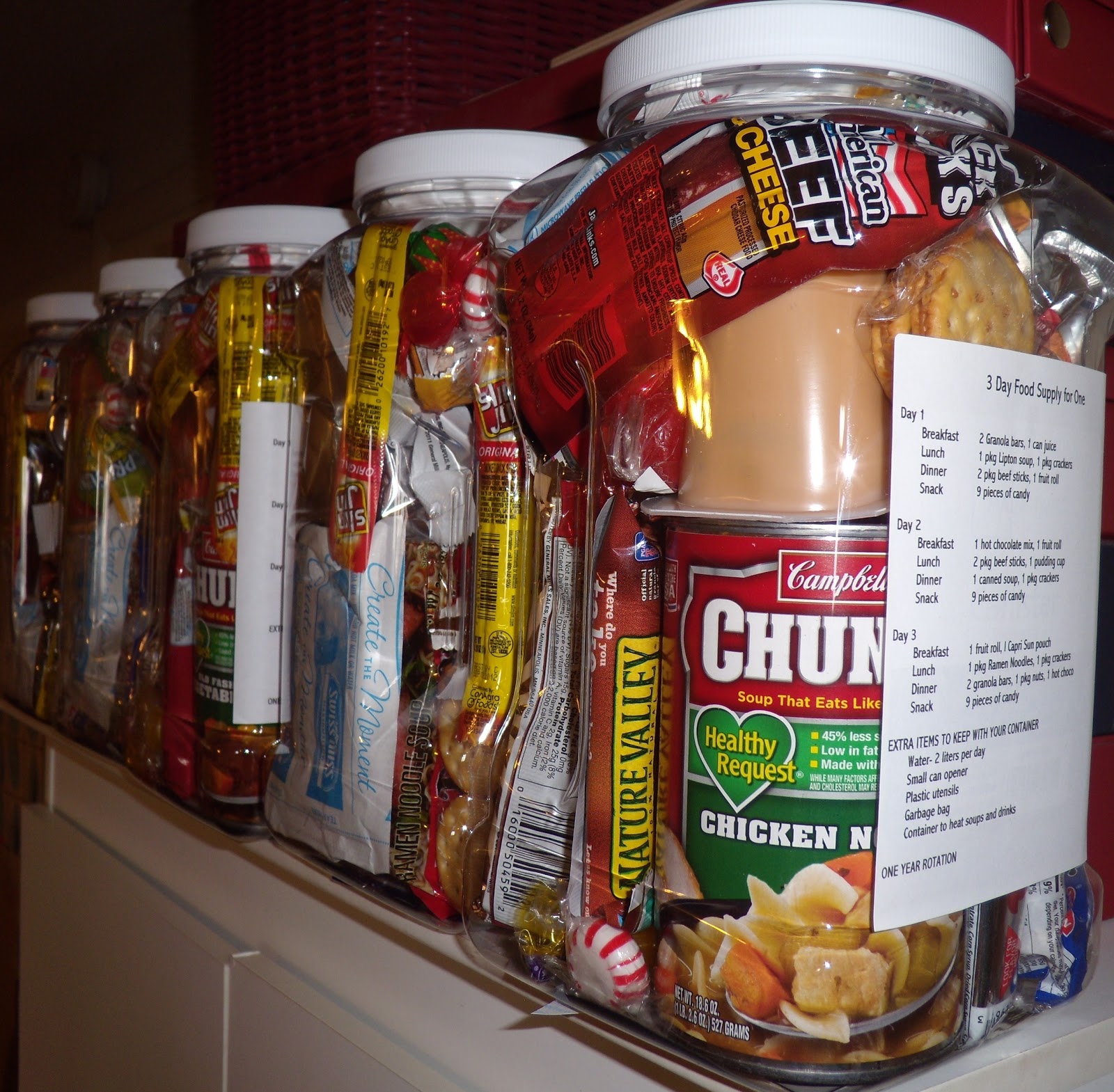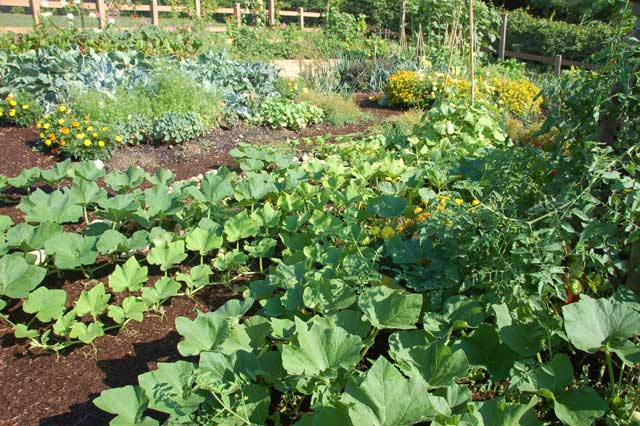You never know when some sort of disaster might happen, but you can be ready. Please note that this is only a 72 hour supply, so I like to put in some comfort foods, this is in no way similar to my longer term food storage, which is geared to a longer survival period.

MATERIALS:
One gallon plastic food container per kit (it is very hard to fit all the food into the container so I planned on using 1 gallon zip lock bags) Also added a couple of Oxygen Absorbers in each container for good measure.
Food items on the menu:
3 Day Food Supply for One
Lunch 1 pkg Lipton soup, 1 pkg crackers
Dinner 2 pkg beef sticks, 1 fruit roll
Snack 9 pieces of candy
Breakfast 1 hot chocolate mix, 1 fruit roll
Lunch 2 pkg beef sticks, 1 pudding cup
Dinner 1 canned soup, 1 pkg crackers
Snack 9 pieces of candy
Breakfast 1 fruit roll, I Capri Sun pouch
Lunch 1 pkg Ramen Noodles, 1 pkg crackers
Dinner 2 granola bars, 1 pkg nuts, 1 hot choco
Snack 9 pieces of candy, 1pkg cookies
- EXTRA ITEMS TO KEEP WITH YOUR CONTAINER
Water- 2 liters per day
Small can opener
Plastic utensils
Garbage bag
Shove the food into the container as best you can and store with your backpack or 72 hour kit.
Some food items last longer than others. Related: Shelf life of food.
Tip: If you use mints keep them in a separate baggie or they will make your crackers taste like mint. GOOD TO KNOW!
This “menu” is purely an example. You can put in your jar what ever you want. Food preferences and choices are and should be up to the individual making the kit. I realize lot of you might disagree with the food choices I have used, but it is my choice, you pack yours the way you want, with MREs and long-term food storage items.






 Freeze dried foods are flash frozen and then dried.
Freeze dried foods are flash frozen and then dried.